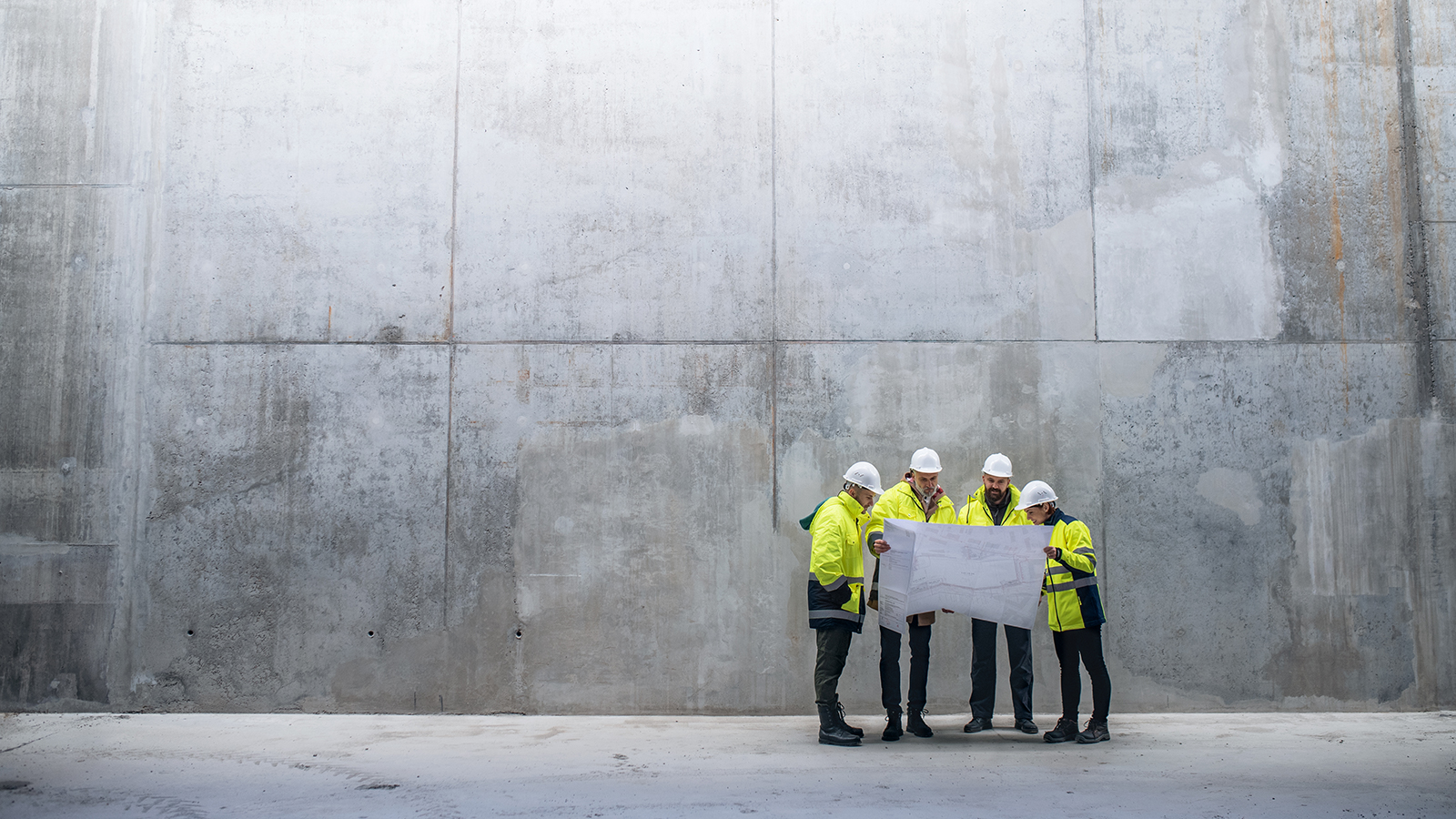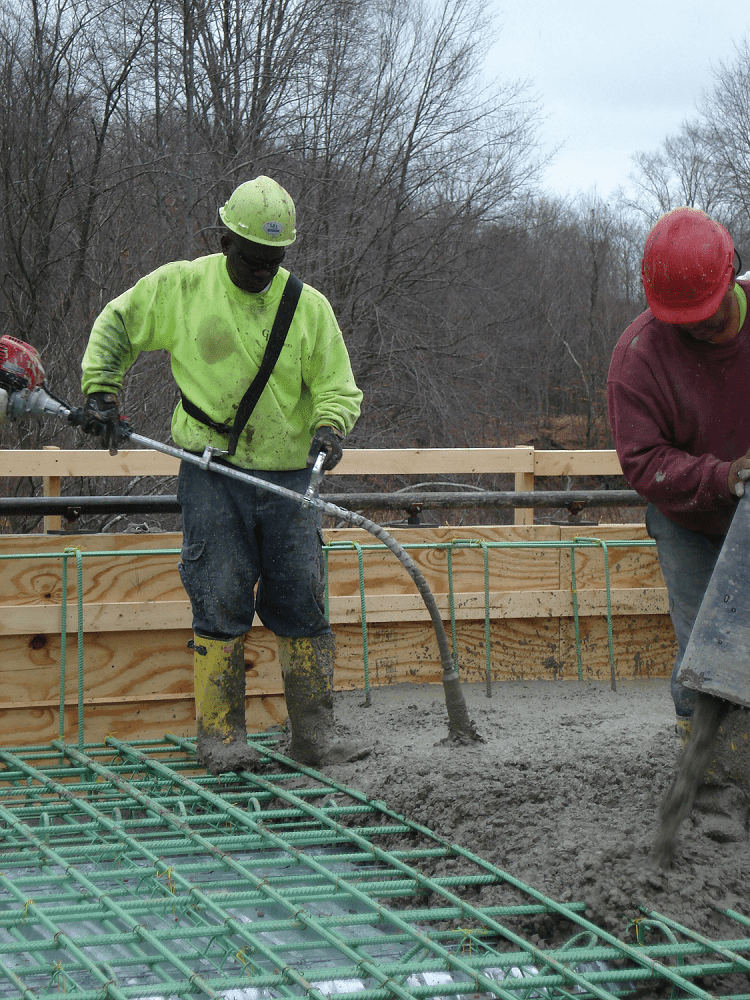The Expert Blueprint to Using West Coast General Engineering commercial concrete in High-Volume Projects
The Expert Blueprint to Using West Coast General Engineering commercial concrete in High-Volume Projects
Blog Article
The Vital Duty of Concrete Structure in Structural Integrity and Longevity
When it pertains to building a property, the foundation is a lot more important than you could think. Concrete foundations provide unmatched strength and resilience, ensuring your structure can withstand various environmental challenges. Without a solid base, you risk potential concerns like moving or fracturing, which can endanger safety and security and value. Understanding the subtleties of concrete structures can be the key to preserving your investment for several years ahead. So, what should you think about next?
Comprehending the Significance of Concrete Foundations
Concrete structures are crucial to the overall security of any kind of structure, as they give the crucial support needed to endure various lots and ecological conditions. When you consider building a home or an industrial room, the structure is the first point you must consider. It acts as a barrier against dampness, shielding your residential property from water damage. A well-placed concrete foundation likewise prevents settling and changing, which can cause cracks in wall surfaces and floorings. You'll want to assure that the foundation is properly developed and enhanced, as this impacts the durability of your building. Furthermore, a strong structure can improve power performance by reducing air leaks. Bear in mind, ignoring the relevance of a concrete foundation can cause pricey repair services down the line. So, buying a high quality structure upfront is important for the integrity and toughness of your structure.
Advantages of Concrete Foundations for Architectural Integrity
While several aspects add to a building's structural stability, concrete foundations provide unparalleled resilience and stamina. You'll appreciate that concrete can hold up against extreme weather, standing up to both moisture and temperature fluctuations. This resilience implies your framework is much less likely to experience breaking or moving gradually, which can jeopardize its safety.Additionally, concrete's fundamental weight supplies a strong base, stopping activity during all-natural occasions like earthquakes or floodings. When you select a concrete structure, you're also deciding for low maintenance; unlike wood, it won't rot or attract pests, conserving you time and money in repairs.Moreover, concrete's fire resistance offers added safety and security, guaranteeing your framework can withstand heats without considerable damage. Overall, spending in a concrete structure indicates you're prioritizing the long-term security and integrity of your building, making it a wise selection for any kind of construction project.
Common Kinds Of Concrete Foundations
When it comes to building structures, recognizing the typical sorts of concrete foundations can help you make informed choices for your task. One of the most common types include slab-on-grade, crawl room, and full cellar foundations.A slab-on-grade structure is a straightforward, economical choice, where a thick concrete piece is poured directly on the ground. This kind functions well in cozy environments, as it reduces heat loss.Crawl room structures elevate the home slightly over ground, enabling for air flow and access to pipes and electrical systems. This design can aid stop moisture issues.Full cellar foundations offer added living or storage area while providing exceptional architectural support. They need more excavation and are commonly used in cooler climates to stop frost heave.
Factors to Take Into Consideration When Creating a Concrete Structure

Finest Practices for Installing Concrete Foundations
When you're setting up a concrete structure, proper website preparation is necessary to ensure stability (West Coast General Engineering concrete foundation Rancho Cucamonga). You'll also require to recognize reinforcement techniques to improve toughness and resilience. Do not ignore the healing process, as it plays a basic role in attaining a solid structure.
Website Prep Work Relevance
It may seem simple, correct site preparation is essential for assuring a strong and sturdy concrete structure. Beginning by removing the area of any debris, plants, or organic product that can jeopardize the foundation's integrity. Next off, analyze the soil type and compaction; you could require to excavate or include materials to develop a steady base. Level the ground to guarantee even weight circulation and stay clear of resolving problems later on. Installing correct drainage systems is additionally vital to prevent water buildup, which can weaken the structure over time. Mark out the structure's measurements accurately to assist the pouring process. By adhering to these steps, you'll establish the stage for a successful concrete structure that stands the test of time.
Reinforcement Strategies Explained
When the site is properly prepared, the next action in ensuring a strong concrete structure includes applying reliable reinforcement strategies. You ought to start by making use of steel rebar, which offers tensile stamina try here and aids avoid fracturing. Lay the rebar in a grid pattern, ensuring it's raised using spacers to maintain appropriate protection. In addition, consider making use of cable mesh for added support, specifically in areas based on heavy lots. Do not forget to connect the rebar junctions safely with cable. For bigger structures, fiber support can boost sturdiness, minimizing the threat of contraction splits. Always adhere to local building codes and standards to ensure conformity. By using these reinforcement methods, you'll substantially boost your structure's strength and durability, laying a strong groundwork for your structure.
Healing Process Essentials
To ensure your concrete foundation cures correctly, it's crucial to maintain ample dampness and temperature conditions instantly after pouring. Start by covering the surface with a wet burlap or plastic sheeting to preserve moisture. This maintains the concrete moisturized, stopping fractures and ensuring toughness. You should also keep track of the temperature level; excellent curing problems are between 50 ° F and 90 ° F. If it's too warm, haze the surface area consistently to stop rapid evaporation. For winter, think about making use of insulating coverings to preserve warmth. Aim for a healing period of at least seven days, as this is vital for optimal strength growth. By adhering to these ideal methods, you'll improve your foundation's resilience and longevity, making certain architectural stability for many years to find.
Upkeep of Concrete Structures for Durability
To maintain your concrete foundation solid and enduring, regular assessments are necessary. You must likewise guarantee efficient drain services are in location to stop water damage. If you find any kind of fractures, resolving them immediately will save you from larger problems down the line.

Routine Assessments and Evaluations
While regular inspections and analyses may appear like a duty, they're necessary for maintaining the integrity of your concrete structure. By regularly checking for splits, shifts, or indications of wear, you can catch possible problems before they rise into pricey repair services. Try to find any type of water pooling around the structure or uncommon settling, as these can signify underlying problems. It's additionally wise to keep track of any type of modifications in your home's structure, like doors that stick or home windows that don't open smoothly. Keeping a record of your assessments helps track adjustments gradually, permitting positive maintenance. Ultimately, these analyses guarantee your foundation remains secure, supporting the long life and security of your whole structure. Do not ignore this crucial facet of homeownership!
Efficient Water Drainage Solutions
Normal examinations can reveal problems like water drainage problems that might jeopardize your concrete foundation's security. To stop water accumulation, ensure your gutters and downspouts straight water away from the foundation. Installing French drains pipes can efficiently reroute surface area and groundwater, reducing pressure on your structure walls. In addition, rating the dirt around your home assists guarantee that water moves away, instead of pooling near your foundation.Consider making use of sump pumps in areas vulnerable to flooding, as they actively eliminate excess water. Regularly examine for clogs in drainage systems and clear them quickly. You'll protect your foundation's honesty and longevity by taking these aggressive measures. Keep in mind, effective drainage solutions are necessary for keeping a solid, sturdy concrete structure.
Motivate Fracture Repair Works
When you discover fractures in your concrete foundation, addressing them quickly is essential for preserving its longevity. Tiny cracks can promptly develop into bigger issues, endangering the structural stability of your home. Frequently inspect your foundation for indicators of damage, such as horizontal or vertical cracks. If you find any type of, don't wait-- repair them immediately. You can utilize epoxy shots or concrete patching compounds, which work for sealing fractures. Always comply with the maker's guidelines and take into consideration getting in touch with an expert for substantial damage. Keep in mind, prompt repairs not only improve your foundation's toughness however also save you money over time by stopping extra extensive repair services down the line. Keep aggressive, and your foundation will certainly stay strong and safe.
Dealing With Usual Concerns With Concrete Foundations
Concrete foundations can face different problems with time, making it critical to identify and address them quickly. One of one of the most usual problems is splitting, which can happen as a result of temperature level variations or resolving dirt. If you see splits, it's necessary to analyze their size and depth; small splits can frequently be secured, while bigger ones might require specialist evaluation.Water invasion is another significant issue. Excess moisture can result in mold development and architectural wear and tear. Assurance appropriate read this drainage around your structure to reduce this risk. Additionally, look for indications of shifting or bowing wall surfaces, as this can show underlying concerns with your structure's stability.Regular examinations are essential to catch these troubles early. If you find any kind of concerning indicators, do not hesitate to seek advice from a structure professional. By remaining aggressive, you can keep the integrity and longevity of your concrete foundation, ensuring your home stays risk-free and safe.
Often Asked Questions
Just How Does Dirt Type Influence Concrete Structure Efficiency?
Soil type considerably influences concrete foundation performance. If you have actually obtained large clay, as an example, it can cause moving and fracturing. Sandy dirt might cause resolving. Understanding your soil aids assure a steady foundation.
Can Concrete Foundations Be Repaired if Damaged?
Yes, you can repair broken concrete structures. Depending upon the level of the damage, techniques like epoxy shot or slab jacking can recover stability. It's best to seek advice from a specialist for efficient services.
What Is the Normal Lifespan of a Concrete Foundation?
A concrete structure normally lasts 30 to 100 years, depending upon elements like dirt problems, climate, and upkeep. Homepage You'll wish to watch on it to guarantee it continues to be in great shape throughout its life-span.
Exist Alternative Products to Concrete for Foundations?
Yes, there are options to concrete for foundations, like steel, hardwood, or perhaps recycled materials. Each choice has distinct advantages and downsides, so you should consider your task's particular demands when selecting the ideal material.
Exactly How Does Climate Effect Concrete Structure Toughness?
Climate substantially affects concrete structure sturdiness (West Coast General Engineering concrete foundation). Severe temperatures, wetness, and freeze-thaw cycles can damage the material, causing splits and architectural problems. You need to consider neighborhood climate conditions when intending your structure to guarantee long-lasting efficiency
Report this page